
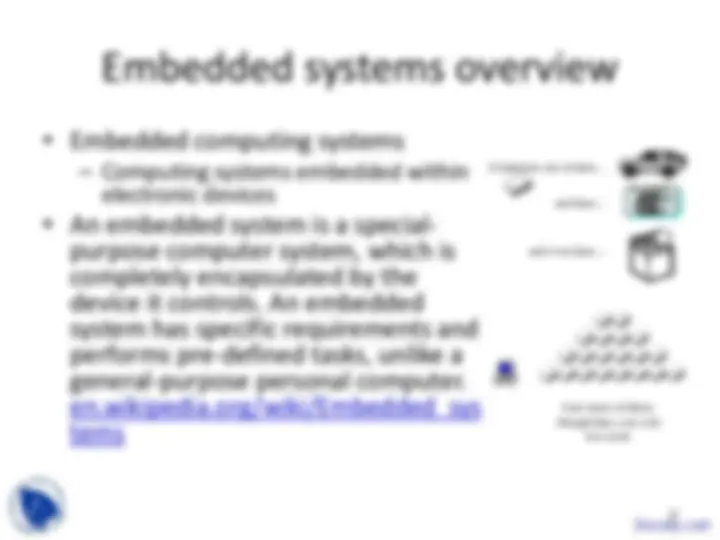
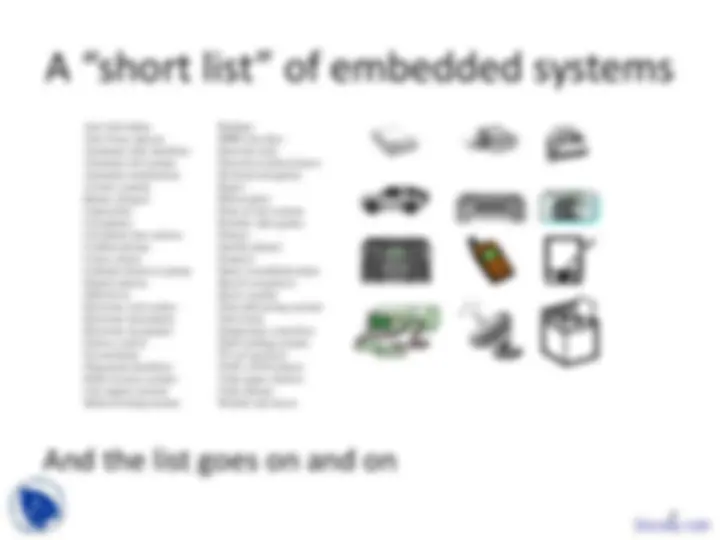
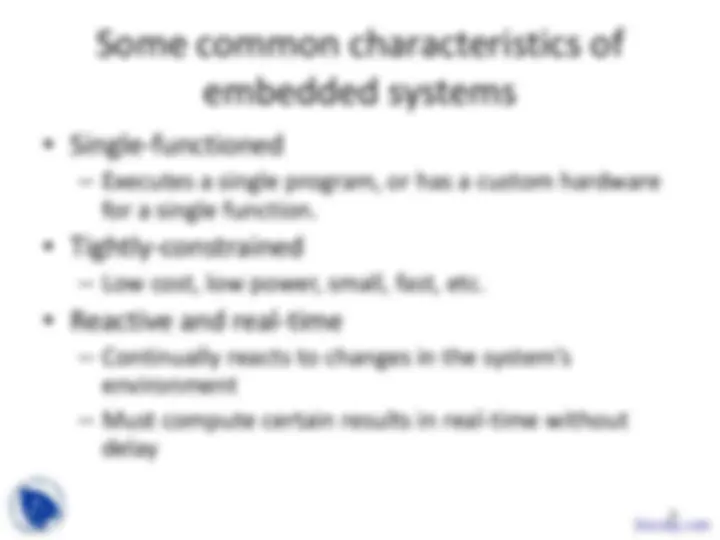
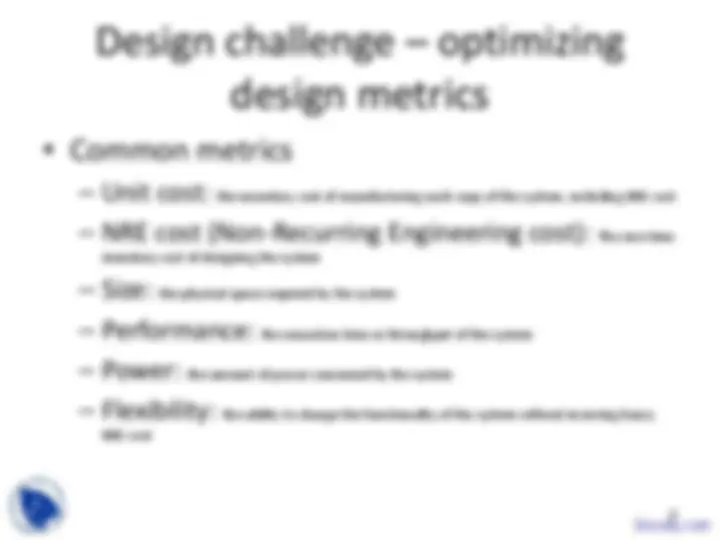
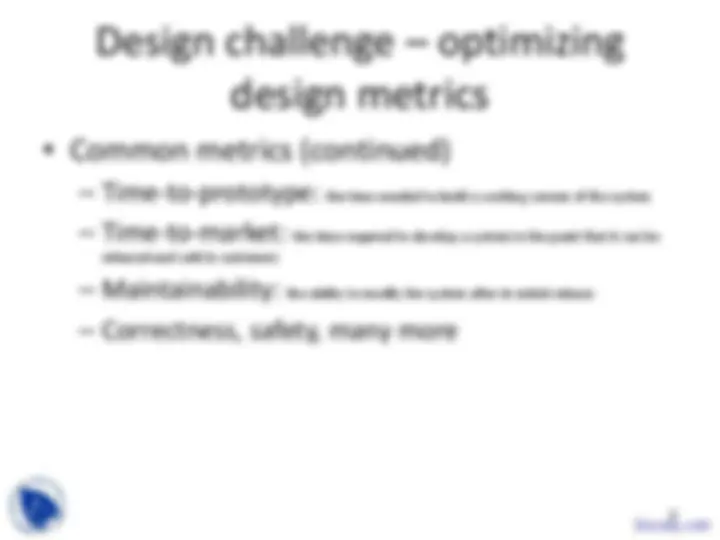
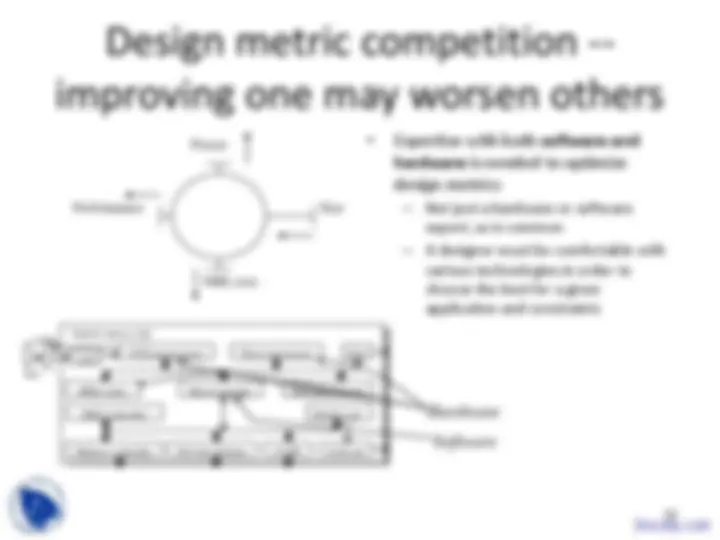
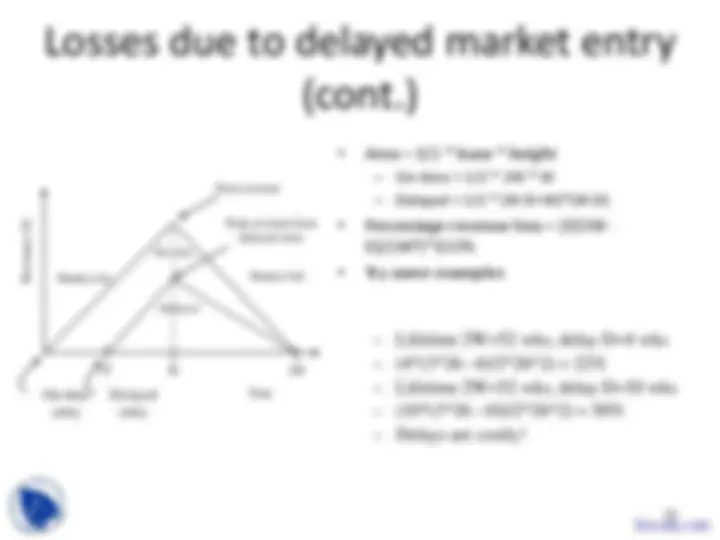
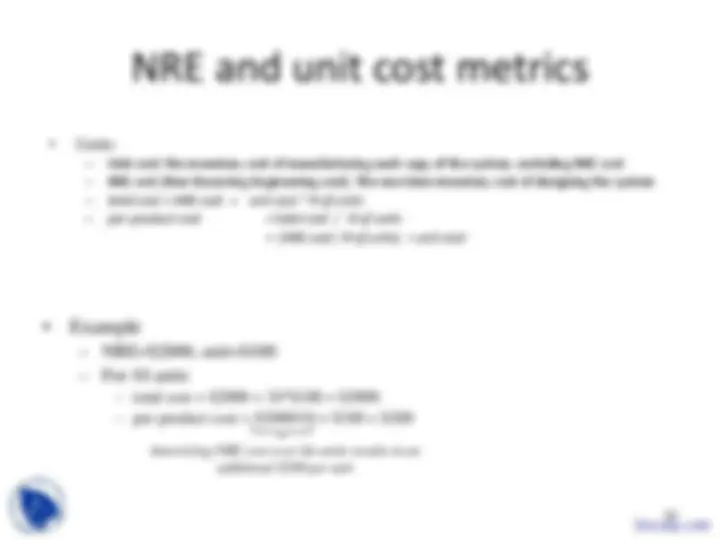
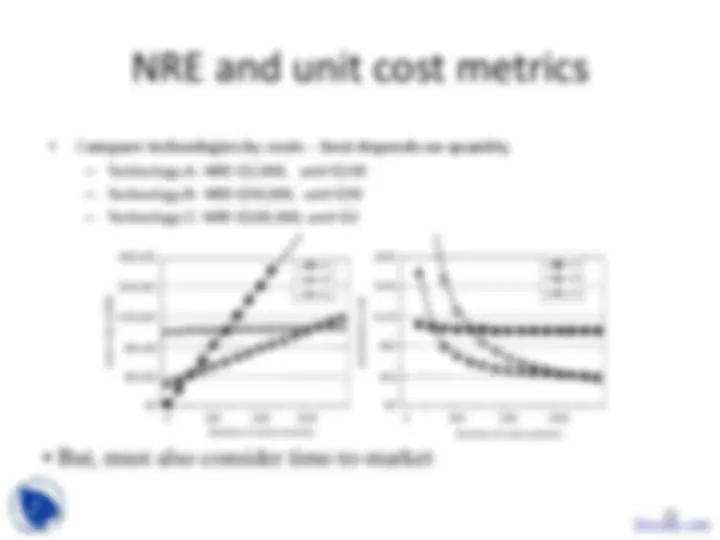
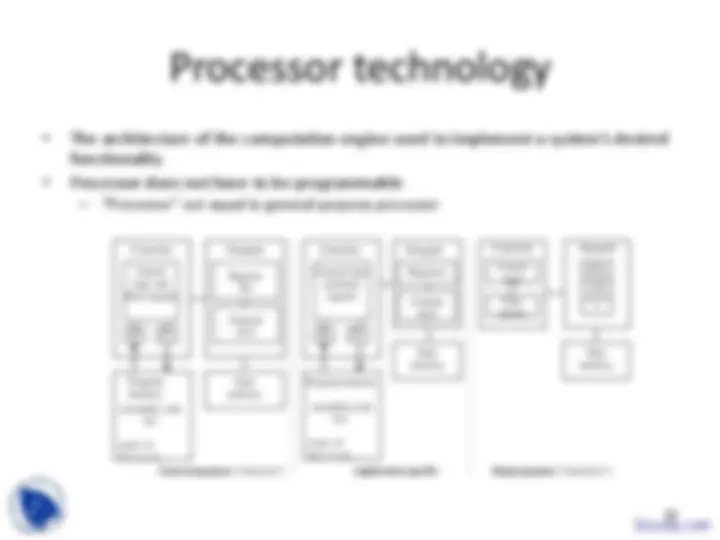
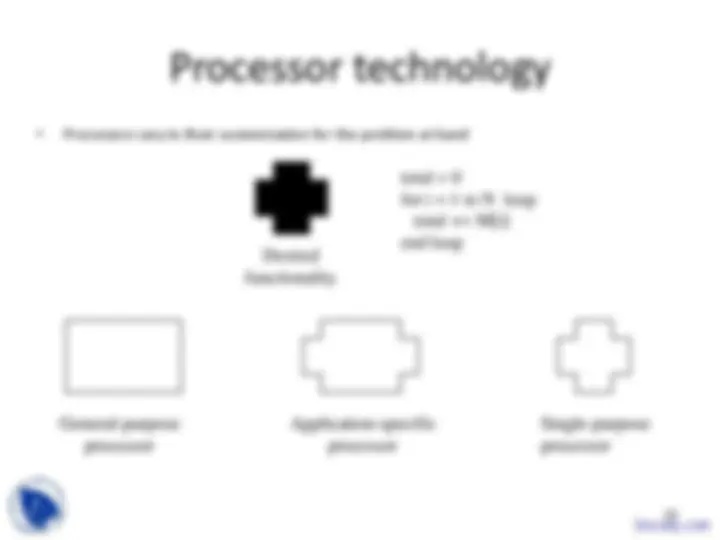
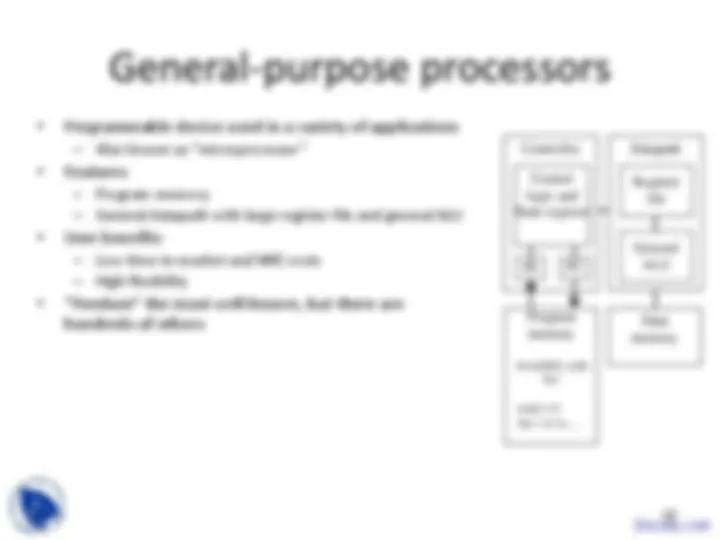
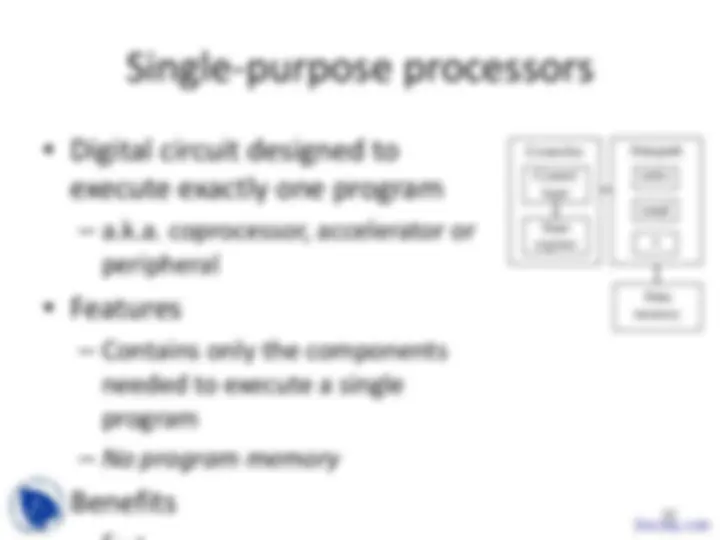
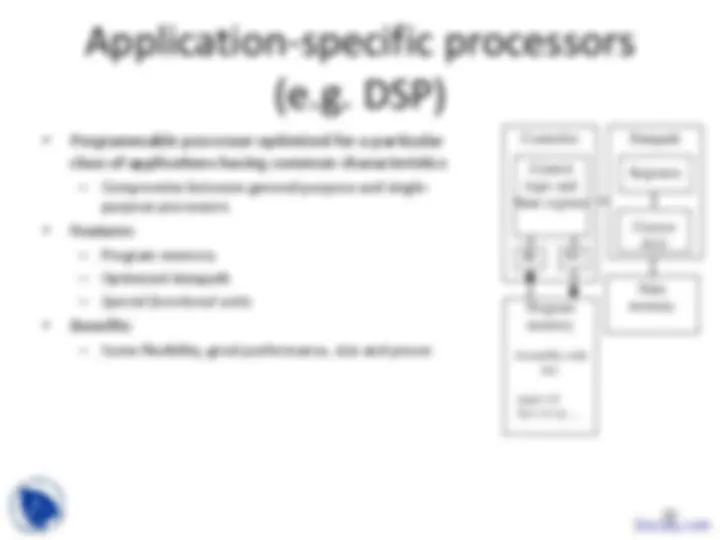
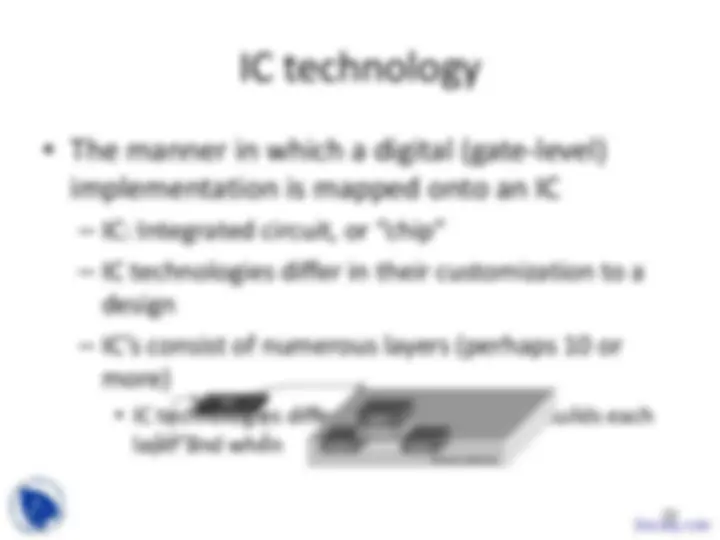
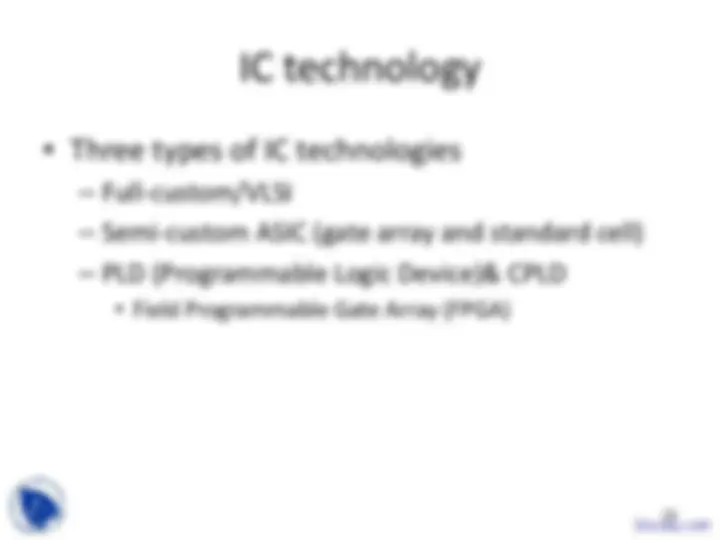
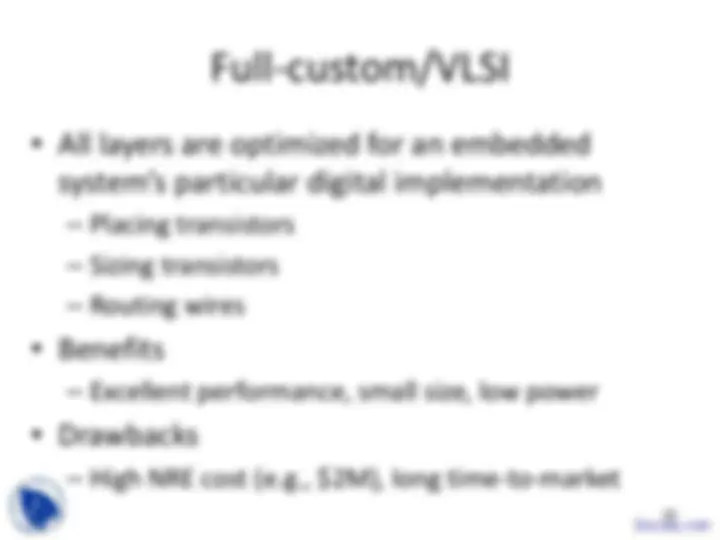
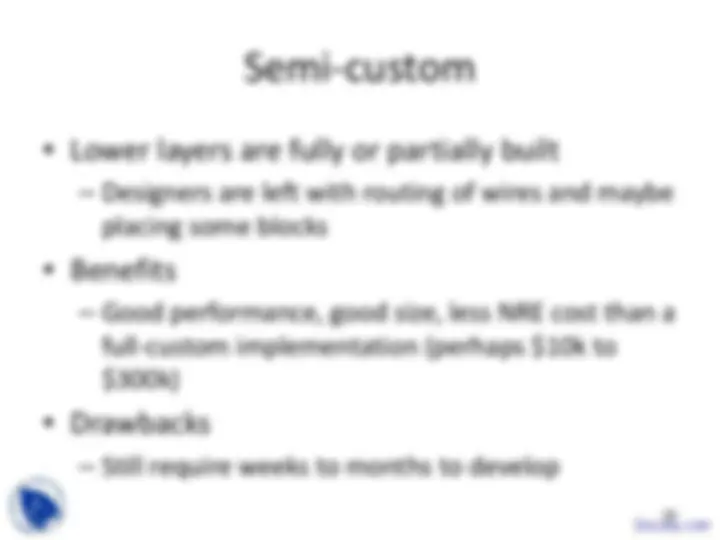
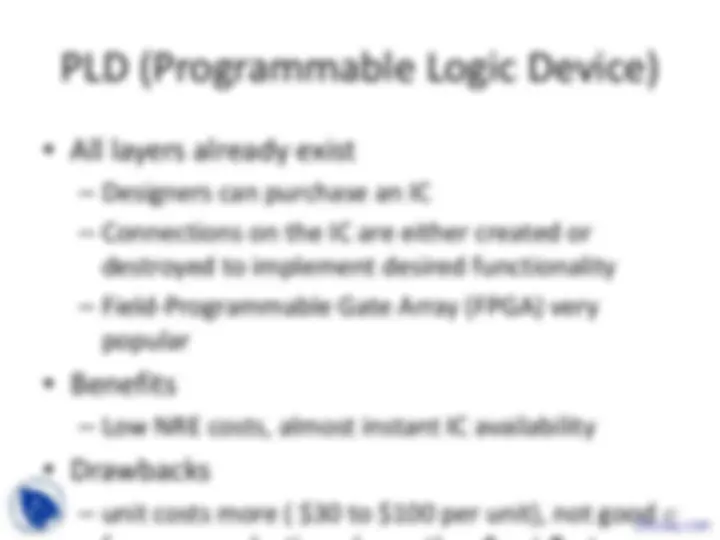
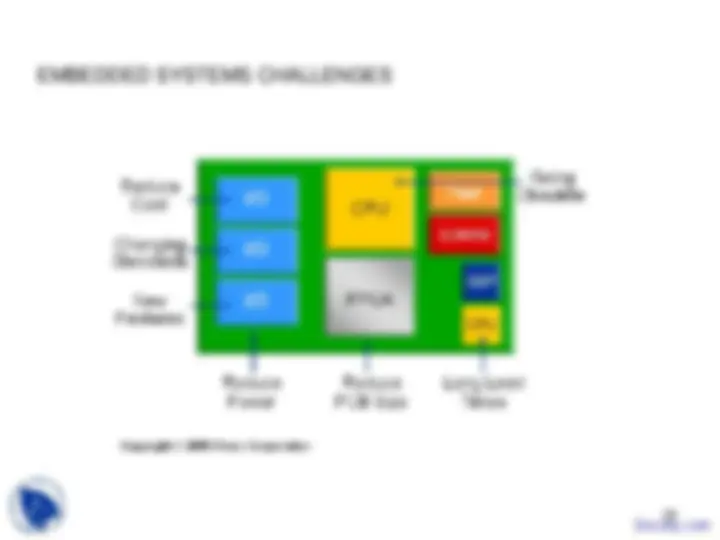
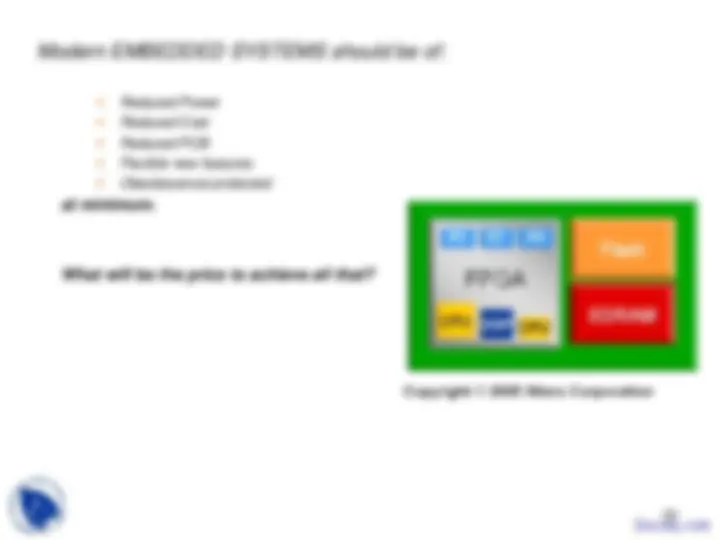
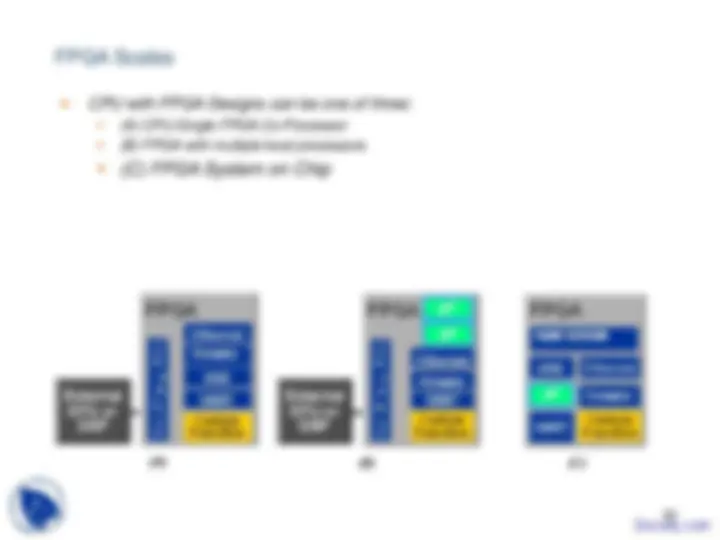
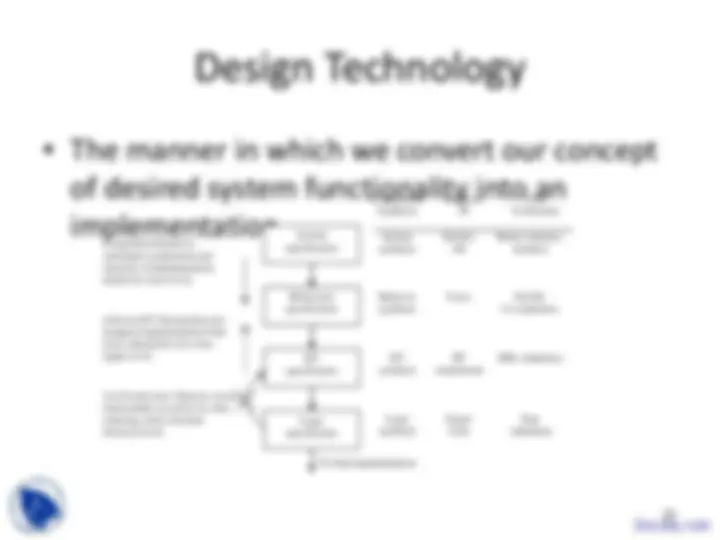
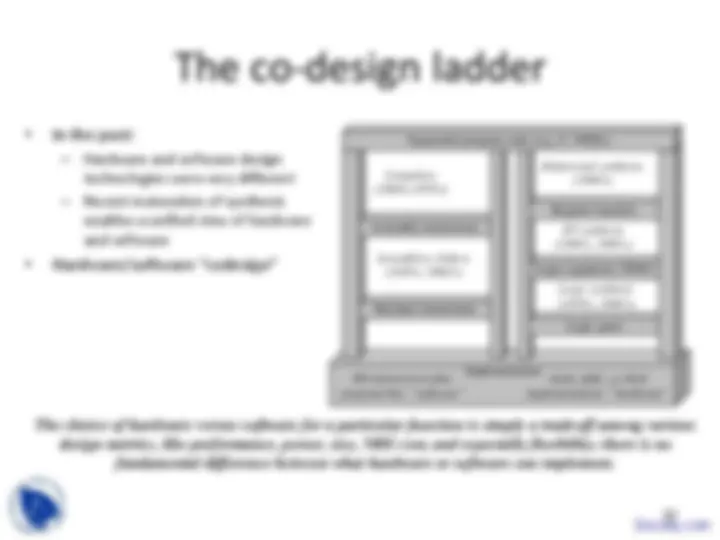
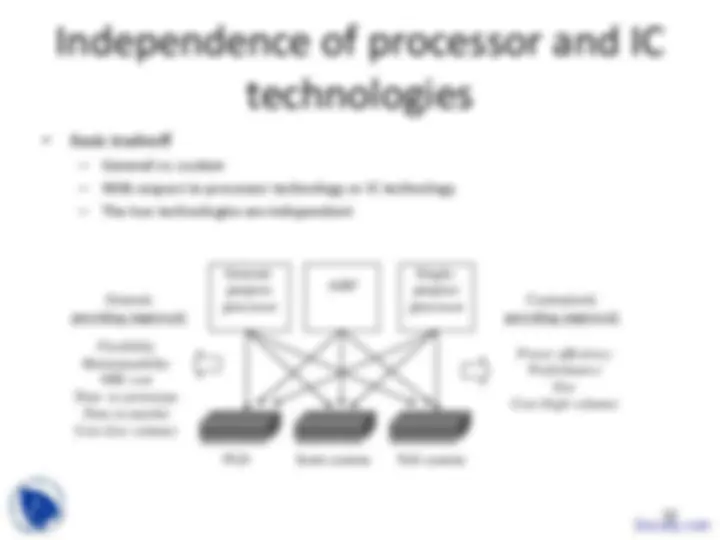
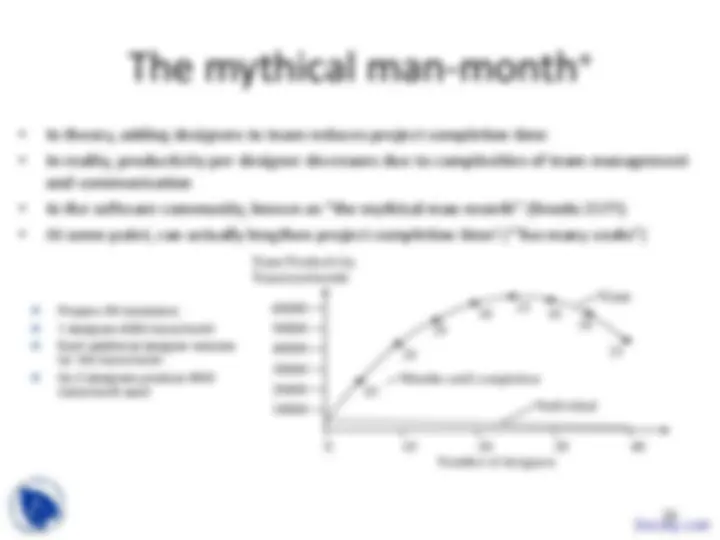
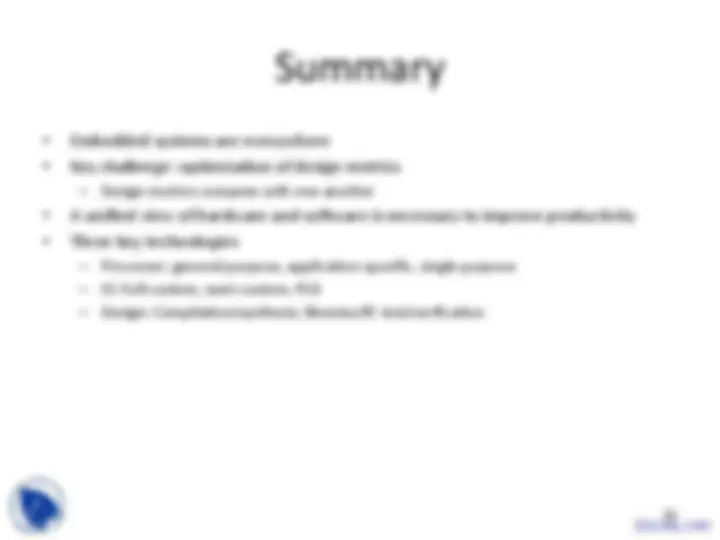


Study with the several resources on Docsity

Earn points by helping other students or get them with a premium plan


Prepare for your exams
Study with the several resources on Docsity

Earn points to download
Earn points by helping other students or get them with a premium plan
Community
Ask the community for help and clear up your study doubts
Discover the best universities in your country according to Docsity users
Free resources
Download our free guides on studying techniques, anxiety management strategies, and thesis advice from Docsity tutors
These are the Lecture Slides of Embedded System Design which includes Hardware Design, Elevator Controller, Simple Elevator Controller, Try Capturing, Unit Control, Request Resolver, Sequential Program Model, Partial English Description, System Interface etc. Key important points are: Technologies, Embedded Systems, Design Challenge, Optimizing Design Metrics, Processor Technologies, Technologies, Design Technologies, Laptops, Mainframes, Servers
Typology: Slides
1 / 35

This page cannot be seen from the preview
Don't miss anything!




























Anti-lock brakes Auto-focus cameras Automatic teller machines Automatic toll systems Automatic transmission Avionic systems Battery chargers Camcorders Cell phones Cell-phone base stations Cordless phones Cruise control Curbside check-in systems Digital cameras Disk drives Electronic card readers Electronic instruments Electronic toys/games Factory control Fax machines Fingerprint identifiers Home security systems Life-support systems Medical testing systems
Modems MPEG decoders Network cards Network switches/routers On-board navigation Pagers Photocopiers Point-of-sale systems Portable video games Printers Satellite phones Scanners Smart ovens/dishwashers Speech recognizers Stereo systems Teleconferencing systems Televisions Temperature controllers Theft tracking systems TV set-top boxes VCR’s, DVD players Video game consoles Video phones Washers and dryers
Some common characteristics of
embedded systems
for a single function.
environment
delay
Design challenge – optimizing design
metrics
functionality
implementation
monetary cost of designing the system
NRE cost
hardware is needed to optimize
design metrics
expert, as is common
various technologies in order to
choose the best for a given
application and constraints
Performance Size
Power
NRE cost
Microcontroller
CCD preprocessor Pixel coprocessor A2D
JPEG codec
DMA controller
Memory controller ISA bus interface UART LCD ctrl
Display ctrl
Multiplier/Accum
Digital camera chip
lens
Hardware
Software
to the point it can be sold to
customers
would have highest sales
about 8 months
D)/2W^2 )*100%
On-time Delayed entry entry
= (NRE cost / # of units) + unit cost
Amortizing NRE cost over the units results in an additional $200 per unit
speed or instructions per second
may process 8 images per second (by capturing a new image while previous image is
being stored).
Docsity.com
total = 0
for i = 1 to N loop
total += M[i]
end loop
General-purpose
processor
Single-purpose
processor
Application-specific
processor
Desired
functionality
hundreds of others
IR PC
Register file
General ALU
Controller Datapath
Program memory
Control logic and State register
Data memory